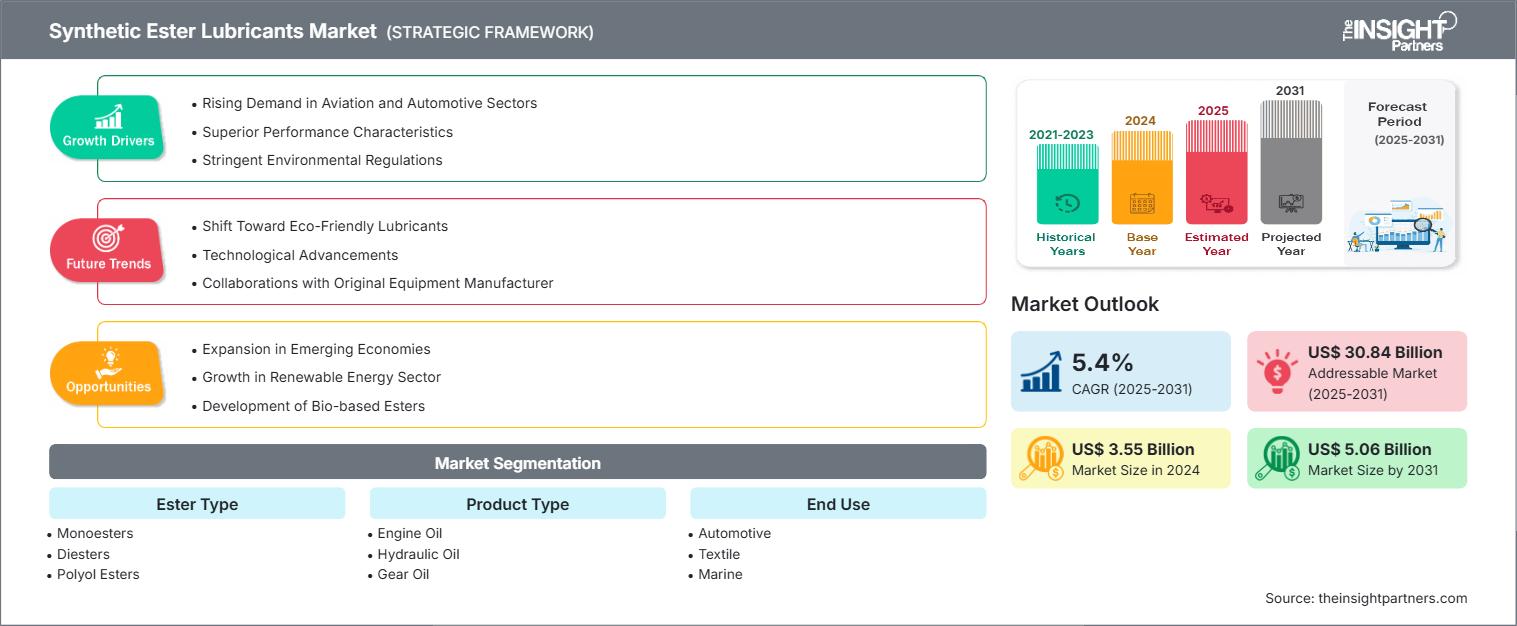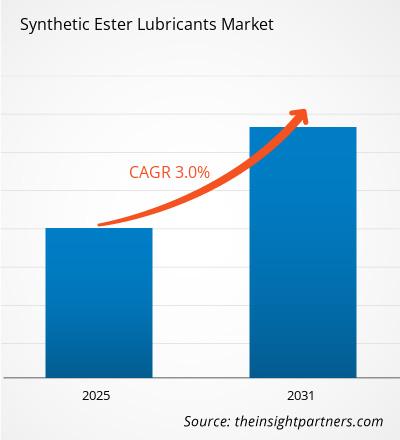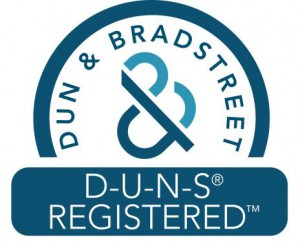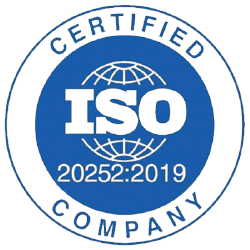The Global Synthetic Ester Lubricants Market size is projected to reach US$ 5.06 billion by 2031 from US$ 3.55 billion in 2024. The market is expected to register a CAGR of 5.4% during 2025–2031.
Global Synthetic Ester Lubricants Market Analysis
The synthetic ester lubricants market is growing steadily, as there are stricter environmental regulations and high-performance lubricants are increasingly in demand within automotive, aerospace, and industrial applications. Synthetic esters are well known for excellent thermal stability, biodegradability, and very low volatility properties, and have become the solution of choice when compared with conventional lubricants, particularly in extreme conditions with high temperature and important oxidative stability characteristics. Technological advances in ester formulation are also assisting with customized product solutions that meet the various needs of the industry.
Global Synthetic Ester Lubricants Market Overview
The synthetic ester lubricants market is developing as there is an increasing demand for high-performance and environmentally friendly lubrication. The synthetic ester lubricants are formed from chemically modified esters, fats, and oils, and they provide low volatility, excellent thermal stability, biodegradability, and better lubrication properties in high-performance machines. These features allowed synthetic ester lubricants to be used in automotive, aerospace, marine, and industrial applications. With increasing restrictions on emissions and sustainability initiatives, businesses are seeking lubricant solutions that have a neutral impact on the environment and align with performance criteria. The growth of the electric vehicle and renewable energy market will provide new applications for synthetic ester-based lubricants.
Customize This Report To Suit Your Requirement
You will get customization on any report - free of charge - including parts of this report, or country-level analysis, Excel Data pack, as well as avail great offers and discounts for start-ups & universities
Synthetic Ester Lubricants Market: Strategic Insights

- Get Top Key Market Trends of this report.This FREE sample will include data analysis, ranging from market trends to estimates and forecasts.
Global Synthetic Ester Lubricants Market Drivers and Opportunities
You will get customization on any report - free of charge - including parts of this report, or country-level analysis, Excel Data pack, as well as avail great offers and discounts for start-ups & universities
Synthetic Ester Lubricants Market: Strategic Insights

- Get Top Key Market Trends of this report.This FREE sample will include data analysis, ranging from market trends to estimates and forecasts.
Market Drivers:
- Stringent Environmental Regulations: Governments around the world are enforcing stricter emissions and waste disposal laws to protect the environment.
- Rising Demand for High-Performance Lubricants Industries are making the move to lubricants that will provide greater thermal stability, resistance to oxidation, and longer service life than conventional lubricants.
- Expansion of Aerospace and Aviation Sectors The increase in global air travel and spending on defense is creating a higher demand for advanced lubricants that will perform in a high-altitude and high-temperature environment.
- Industrial Automation and Machinery Growth Increased automation means that machines and equipment need to work harder and are subjected to extreme stress and temperature, which increases the demands on lubricants.
- Increasing Demand for High-Performance Lubricants Industrial equipment and cable vehicles need lubricants that are able to provide greater thermal stability, oxidation resistance, and longer service intervals.
Market Opportunities:
- Rapid Growth of Electric Vehicles Electric vehicles demand specialized lubrication for their electric motors and thermal management, representing a sizable opportunity for synthetic esters.
- Increased Focus on Sustainable Manufacturing: Industries that aim for carbon neutrality are embracing biodegradable and low-toxicity lubricants such as synthetic esters.
- Emergence of Renewable Energy Sectors: Wind turbines and solar equipment require high-performance lubricants, creating a new application area for synthetic esters in lubricants.
- Expansion into Developing Markets: Industrial demands from increasing industrialization in developing economies create new growth demands for high-performance synthetic lubricants.
Global Synthetic Ester Lubricants Market Report Segmentation Analysis
The global synthetic ester lubricants market is divided into different segments to give a clearer view of how it works, its growth potential, and the latest trends. Below is the standard segmentation approach used in industry reports:
By Ester Type:
- Monoesters Monosesters are the least expensive family of ester-based lubricants.
Stearates
Streate esters are favored for their lubricity and biodegradability. They are good for environmentally sensitive applications.- Oleates Oleates have good solvency and low temperature performance and are popular in biodegradable formulations.
- Others Other monoesters have niche applications in metalworking fluids and general-purpose lubricants where only moderate thermal stability is required.
- Diesters The diesters category is commonly accepted by both industrial and automotive markets based on their balanced performance characteristics of good thermal stability and oxidation resistance.
Adipate Esters
Adipate esters are the most prominent diester category and are commonly added for their exceptional low-temperature fluidity, oxidative stability, and sustainability for automotive and industrial applications.- Azelate Esters Azelate esters are mainly observed in high-performance applications since they exhibit enhanced lubrication and are associated with lower volatility.
- Dimerate Esters Dimerate esters are commonly used in heavy-duty applications where a high viscosity index and excellent film-forming characteristics are desirable.
- Others Other diesters would typically be tailored to a specified formulation where a balance of cost and performance needs to be found in the end-product.
- Polyol Esters This category dominates high-performance markets since they have excellent thermal stability, low volatility, and lubrication regardless of extreme conditions.
Trimethylolpropane Esters
Trimethylolpropane esters are prevalent and most commonly used in refrigeration and aviation applications, where hydrolytic stability and lubrication are advantageous.- Pentaerythritol Esters Pentaerythritol esters dominate market share in high-temperature applications due to their favorable oxidative stability and thermal stability.
- Neopentyl Glycol Esters Neopentyl glycol esters are generally well utilized in industrial lubricants due to their low volatility and favorable chemical stability.
- Others Other polyol esters include products that were designed for distinctive aerospace and military applications with specific performance requirements, as well as certain polyol esters for synthetic lubricants.
- Complex Esters The complex esters group is an emerging segment as complex esters cater to customizable molecular structures, providing a better balance of high lubricity along with high stability to temperature, and low volatility, particularly in synthetic industrial and automotive formulations.
- Others The other segment consists of emerging types of esters that were designed for only special application consideration, where regular esters either could not meet performance requirements or regulatory obligations.
By Product Type:
- Engine Oil The demand for engine oil is increasing globally due to the rising vehicle ownership and the need for high-performing, fuel-efficient lubricants.
MCO (Motorcycle Oil)
The MCO segment is experiencing steady growth due to the increasing motorcycle usage across the world.- PCMO (Passenger Car Motor Oil) PCMO is the leading segment in the engine oil market due to the rise in the number of passenger vehicles and the need for fuel-efficient and low-emission lubricants.
- HDEO (Heavy-Duty Engine Oil) HDEO is also seeing strong demand from commercial transport and logistics sectors that require performance oils for long intervals and engine protection.
- Others This includes specialty engine oils for off-road vehicles, racing engines, and hybrid vehicles, addressing diverse performance needs.
- Hydraulic Oil Hydraulic oil is still a major application area, as high-pressure, anti-wear lubrication is required for heavy machinery.
- Gear Oil Gear oil demand is driven by automotive and industrial gear systems requiring extreme pressure performance and long-term durability.
- Transformer Oil Transformer oil is experiencing a steady demand due to the growth within the power generation and distribution segment, which focuses on thermal stability and electrical insulation performance.
- Immersion Cooling Fluids The immersion cooling fluids segment is increasing rapidly because of the expansion of data centers and high-performance computing, which need improved thermal management.
- Refrigeration Oil Refrigeration oil in cold storage and HVAC systems is an integral component of reliable performance
- Grease Grease is used in automotive, industrial, and marine applications where long-lasting lubrication under high loads and temperatures is critical
- Turbine Oil Turbine oil is significant in energy and power plants that demand high oxidative stability and separation from water in gas and steam turbines
- Metalworking Fluids Metalworking fluids are widely used across manufacturing and machining, needing esters for lubrication, cooling, and a protective coating on surfaces
- Others This category includes niche applications like compressor oils, textile lubricants, and biodegradable specialty fluids tailored for unique industrial needs
By End Use:
- Automotive Rising vehicle production and evolving drivetrain technologies drive demand for high-performance lubricants in both conventional and electric vehicles.
Conventional Vehicles
Synthetic esters are required for engine, transmission, and gear lubrication under varying loads.- Electric Vehicles Use esters for thermal management, motor cooling, and reduction of dielectric losses.
- Textile Synthetic ester lubricants are used for their clean-running and non-staining properties in high-speed textile machinery.
- Marine Stringent environmental regulations and harsh operating conditions in marine operations boost the adoption of biodegradable synthetic ester lubricants.
Cargo Ships
Demand esters for long-drain, high-load engine and gear lubrication.- Passenger Ships Require clean, efficient lubricants for HVAC and engine systems
- Naval Vessels Use high-performance esters for reliability in mission-critical systems.
- Offshore Support Vessels Need environmentally acceptable lubricants for hydraulic systems.
- Fishing and Leisure Favor biodegradable esters to meet marine pollution prevention standards.
- Port Equipment Requires durable lubricants to withstand continuous and heavy-duty operations.
- Others Requires durable lubricants to withstand continuous and heavy-duty operations.
- Mining and Metallurgy Heavy-duty machinery and high-load operations in mining and metal processing demand robust ester-based lubricants for longer equipment life.
- Aviation The aviation sector relies on polyol esters for high-temperature, high-altitude performance in both military and commercial aircraft.
Commercial Aircraft
Use esters in turbine engines and hydraulic systems.- Military Aircraft Require thermally stable esters for mission-critical operations.
- Spacecraft or Satellites Utilize esters in vacuum-compatible and thermally stable formulations.
- Drone and UAV It depends on lightweight, high-efficiency lubricants for motors and sensors.
- Others This includes helicopters and advanced flight systems that need precise lubrication.
- Energy and Power Synthetic esters ensure safety and performance in high-voltage and renewable energy applications.
River Dam
Esters and gate controls are required in turbines due to water exposure.- Offshore Wind Power Use biodegradable esters in gearboxes and hydraulic systems.
- Energy Storage Systems Thermally stable esters are required for battery cooling and safety.
- Others Include geothermal, solar, and hybrid systems using esters in specialized equipment.
- Construction Heavy machinery and tools in construction sites need esters for their load-bearing and wear-reduction capabilities.
Construction Machinery
Uses esters in hydraulic and transmission systems.- Concrete and Construction Tools Require clean, low-toxicity lubricants to reduce wear.
- Wire Ropes and Chains Benefit from esters for rust protection and smooth operation.
- Others Include elevators, cranes, and lifting equipment that are constantly used.
- Industrial Machinery Widespread adoption of ester lubricants for precision, durability, and thermal stability in manufacturing equipment.
- Electrical and Electronics Esters support energy efficiency and insulation in cooling systems of household and automotive electronic appliances.
General Air Conditioners
Require esters for compressor cooling with eco-friendly refrigerants.- Automotive Air Conditioners Use esters compatible with low-GWP refrigerants.
- Refrigerators Benefit from ester oils for quiet, long-lasting operation.
- Others Include vending machines, ice makers, and electric ovens.
- Telecommunication High-performance ester fluids ensure safe thermal management in a growing telecommunication infrastructure.
Data Centers
Use immersion cooling esters for energy-efficient heat dissipation.- Telecommunication Infrastructure Needs esters in transformers and backup systems.
- Others Includes cooling units and power modules for network operations.
- Agriculture Modern farming equipment and processing systems rely on ester lubricants for eco-safe, efficient operation under varied conditions.
- Others Covers niche applications in food processing, packaging, defense, railways, and specialty industrial sectors using customized ester solutions.
By Geography:
- North America
- Europe
- Asia Pacific
- Middle East and Africa
- South and Central America
Synthetic Ester Lubricants Market Regional Insights
The regional trends and factors influencing the Synthetic Ester Lubricants Market throughout the forecast period have been thoroughly explained by the analysts at The Insight Partners. This section also discusses Synthetic Ester Lubricants Market segments and geography across North America, Europe, Asia Pacific, Middle East and Africa, and South and Central America.
Synthetic Ester Lubricants Market Report Scope
| Report Attribute | Details |
|---|---|
| Market size in 2024 | US$ 3.55 Billion |
| Market Size by 2031 | US$ 5.06 Billion |
| Global CAGR (2025 - 2031) | 5.4% |
| Historical Data | 2021-2023 |
| Forecast period | 2025-2031 |
| Segments Covered |
By Ester Type
|
| Regions and Countries Covered | North America
|
| Market leaders and key company profiles |
|
Synthetic Ester Lubricants Market Players Density: Understanding Its Impact on Business Dynamics
The Synthetic Ester Lubricants Market is growing rapidly, driven by increasing end-user demand due to factors such as evolving consumer preferences, technological advancements, and greater awareness of the product's benefits. As demand rises, businesses are expanding their offerings, innovating to meet consumer needs, and capitalizing on emerging trends, which further fuels market growth.

- Get the Synthetic Ester Lubricants Market top key players overview
The synthetic ester lubricants market in the Asia Pacific is witnessing significant growth, driven by rapid industrialization, rising demand for high-performance lubricants, increasing adoption in electric vehicles, and supportive environmental regulations promoting the use of biodegradable and sustainable lubricants.
The synthetic ester lubricants market growth varies across regions due to differences in industrial development, automotive and aviation demand, environmental regulations, technological advancements in lubricant formulations, growing adoption of electric vehicles, and the push for sustainable and biodegradable solutions. Below is a summary of synthetic ester lubricants market share and trends by region:
1. North America
- Market Share: Moderate share driven by demand for high-performance lubricants in automotive and aerospace sectors
- Key Drivers:
- Stringent environmental regulations promote biodegradable lubricants
- High adoption of electric vehicles and industrial automation
- Advanced technological infrastructure supporting lubricant innovation
- Trends: Rising use of synthetic esters in EV thermal management and aviation lubricants
2. Europe
- Market Share: Strong market share supported by strict sustainability mandates and advanced manufacturing
- Key Drivers:
- EU regulations on emissions and biodegradable fluids
- High demand in the automotive, marine, and wind energy sectors
- Focus on circular economy and low-toxicity formulations
- Trends: Shift toward ester-based lubricants in renewable energy and electric mobility applications
3. Asia Pacific
- Market Share: High growth market due to industrialization and expanding automotive production
- Key Drivers:
- Rapid EV adoption in China, India, and Southeast Asia
- Increasing use of high-performance lubricants in manufacturing
- Supportive government policies for clean technology
- Trends: Surge in demand for esters in EVs, industrial equipment, and data center cooling
4. Middle East and Africa
- Market Share: Emerging market with growing interest in industrial and energy applications
- Key Drivers:
- Need to enhance food security in arid and semi-arid regions
- Government incentives for sustainable farming and water-efficient practices
- Investments in agricultural infrastructure and technology
- Trends: Gradual adoption of esters in turbines, compressors, and heavy-duty equipment
5. South and Central America
- Market Share: Moderate growth with increasing focus on industrial efficiency and environmental safety
- Key Drivers:
- Growing automotive and mining activities in Brazil, Argentina, and Chile
- Need for cost-effective, durable lubricants in remote operations
- Government efforts to reduce the environmental impact of industrial fluids
- Trends: Rising interest in biodegradable and long-drain interval ester lubricants
Global Synthetic Ester Lubricants Market Players Density: Understanding Its Impact on Business Dynamics
High Market Density and Competition
Competition is intense due to the presence of established players such as Exxon Mobil Corp, BP Plc, Chevron Corp, TotalEnergies SE, and BASF SE. Regional and niche providers such as AMSOIL Inc, APAR Industries Ltd, Suniso Lubricants Inc, and International Lubricant Inc add to the competitive landscape across different regions.
This high level of competition urges companies to stand out by offering:
- High-performance lubrication solutions
- Innovative delivery systems and application technologies
- Eco-friendly and sustainable formulations
- Competitive pricing models
Opportunities and Strategic Moves
- Growing Demand for High-Performance Lubricants.
- Shift Toward Bio-based and Environmentally Friendly Lubricants
- Addressing Performance Challenges in Extreme Conditions
- Strengthen Technical Support and Customer Education
- Expand and Diversify Product Portfolio
Major Companies operating in the Global Synthetic Ester Lubricants Market are:
- China Petroleum & Chemical Corp (Sinopec)
- Exxon Mobil Corp
- BP Plc
- Chevron Corp
- AMSOIL Inc
- Phillips 66
- TotalEnergies SE
- Valvoline Inc
- Matrix Specialty Lubricants
- BASF SE
Disclaimer: The companies listed above are not ranked in any particular order.
Other companies analyzed during the course of research:
- Cargill Inc
- Idemitsu Kosan Co Ltd
- ENEOS Corp
- APAR Industries Ltd
- Fuchs SE
- Repsol SA
- NYCO
- SAVITA OIL TECHNOLOGIES LIMITED
- Perstorp Holding AB
- Suniso Lubricants Inc
- Shell Plc
- International Lubricant Inc
Global Synthetic Ester Lubricants Market News and Recent Developments
- Chevron Expands Supply Of Marine Lubricants To Include Port Elizabeth, South Africa Chevron Marine Lubricants, a subsidiary of Chevron Corporation, has further extended its global supply capacity to include Port Elizabeth, South Africa. This expansion notably enhances the company's ability to serve vessels taking the longer route to avoid current conflict areas. It also represents a strategically important addition to Chevron's distribution network in the southern region..
- BASF to increase production capacity for synthetic ester base stocks in Jinshan, China. BASF SE announced that it will double its production capacity for its synthetic ester base stocks at its site in Jinshan, China. This strategic decision was made owing to the rising demand for high-performance lubricants in the Asia Pacific and to strengthen the company's position as a reliable supplier that strongly supports customers' growth in the region.
Global Synthetic Ester Lubricants Market Report Coverage and Deliverables
The "Global Synthetic Ester Lubricants Market Size and Forecast (2021–2031)" report provides a detailed analysis of the synthetic ester lubricants market, covering the following areas:
- Global Synthetic Ester Lubricants Market size and forecast at global, regional, and country levels for all the key market segments covered under the scope
- Global Synthetic Ester Lubricants Market trends, as well as market dynamics such as drivers, restraints, and key opportunities
- Detailed Porters and SWOT analysis
- Global Synthetic Ester Lubricants Market analysis covering key market trends, global and regional framework, major players, regulations, and recent market developments
- Industry landscape and competition analysis covering synthetic ester lubricants market concentration, heat map analysis, prominent players, and recent developments for the Global Synthetic Ester Lubricants Market
- Detailed company profiles
Frequently Asked Questions
Which region dominated the synthetic ester lubricants market in 2024?
Which are the major players operating in the synthetic ester lubricants market?
What would be the estimated value of the synthetic ester lubricants market by 2031?
What are the factors driving the growth of synthetic ester lubricants in the market?
What are the emerging trends in the synthetic ester lubricants market?
- Historical Analysis (2 Years), Base Year, Forecast (7 Years) with CAGR
- PEST and SWOT Analysis
- Market Size Value / Volume - Global, Regional, Country
- Industry and Competitive Landscape
- Excel Dataset
Recent Reports
Testimonials
Reason to Buy
- Informed Decision-Making
- Understanding Market Dynamics
- Competitive Analysis
- Identifying Emerging Markets
- Customer Insights
- Market Forecasts
- Risk Mitigation
- Boosting Operational Efficiency
- Strategic Planning
- Investment Justification
- Tracking Industry Innovations
- Aligning with Regulatory Trends





















 Get Free Sample For
Get Free Sample For